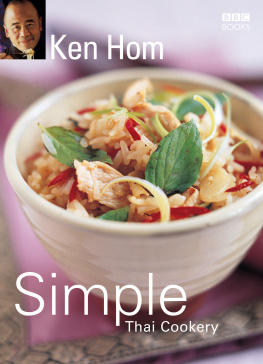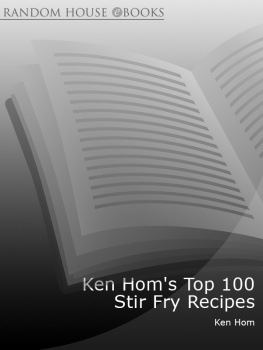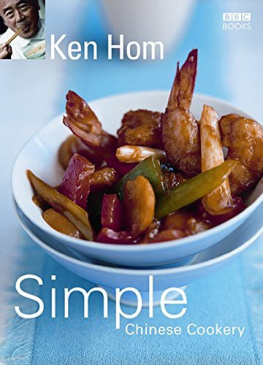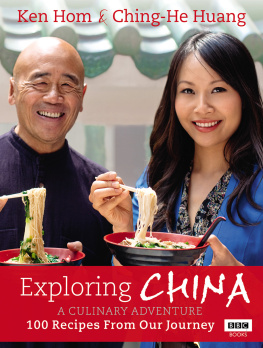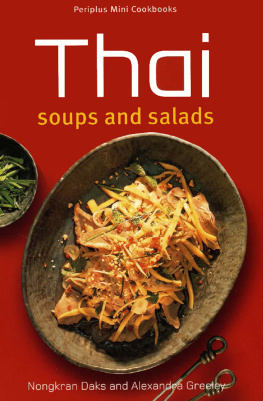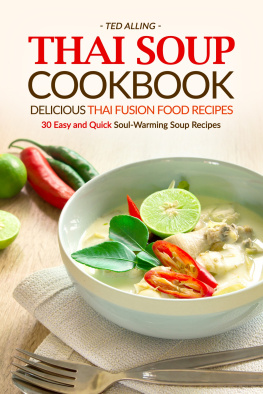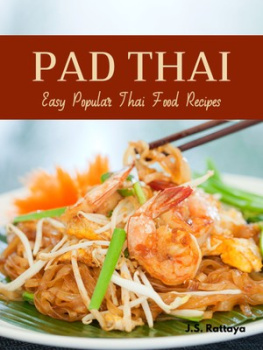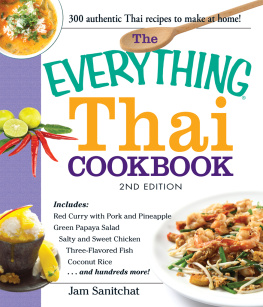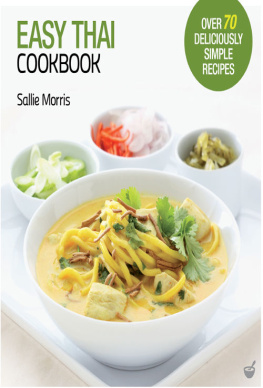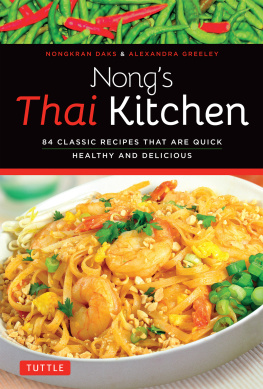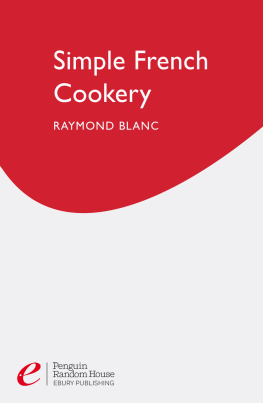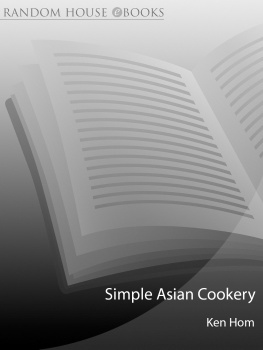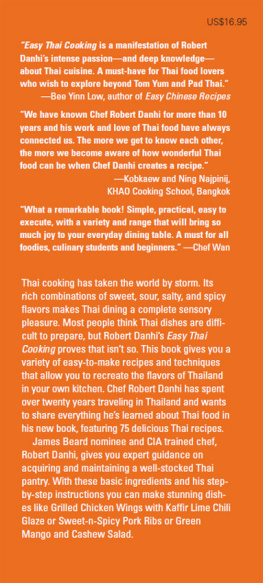Contents
Introduction
I have been visiting Thailand for decades and have grown to love its people, the land, the culture and especially the delightful and glorious cuisine. I remember my first taste of Thai food, exploding with spices and herbs in combinations I had never imagined. Since then I have sampled and feasted my way through many colourful food markets, restaurants and home kitchens throughout Thailand. I continue to be amazed at the ability of Thai cooks to offer creative variations on familiar ingredients.
I was fortunate enough to work for a number of years at that famous Bangkok landmark, the Oriental Hotel. Thanks to Kurt Wachtveitl, general manager par excellence, I was given the opportunity to study Thai cookery by working with the greatest contemporary masters of that noble tradition. It was there that I learned the fundamentals of Thai cooking techniques, ingredients, flavours and harmonies. I attended classes at the well-known Thai Cooking School and worked alongside and under the supervision of Norbert Kostner, executive chef at the Oriental. Norbert is married to a Thai, speaks fluent Thai and, having lived in Thailand for decades, is a true convert to Thai culture. Most important, he is an outstanding exponent of Thai cuisine. His knowledge of all cookery traditions is prodigious but his first love is for the Thai. Norbert was kind enough to take me under his wing and share with me all his knowledge of and veneration for the cuisine of his adopted land.
His enthusiasm for Thai cookery inspired me to emulate him and to make Thai traditions my own. My experience at the Oriental deepened my appreciation of Thai cuisine and brought me to love the surprising and delicious combinations of tastes and textures that characterize that remarkable tradition. Ever since, I have used Thai flavours in my everyday cooking, whether it be classic Chinese, French or, most often, fusion style. I have noted that every culinary tradition has gained from this mixture of Thai influences.
My hope is that you will use this book as a handy and helpful guide to the increasingly popular cuisine of Thailand and that you will find, as I have, how wonderful, refreshing and easy Thai cookery can be.
I remember my first taste of Thai food, exploding with spices and herbs in combinations I had never imagined.
Ingredients and Equipment
INGREDIENTS
It has taken just a few decades for Thai food, with its unique ingredients, to win popularity with home cooks and master chefs alike. Thai ingredients have become a valued staple in the pantries of both home and restaurant kitchens. This is partly in response to healthy eating concerns most Thai cooking is light and clean, with little added animal fat such as butter, cream or cheese. Furthermore, with global connections now commonplace, many formerly exotic Thai ingredients have become familiar and readily available. And as Thai immigration has expanded throughout the West, its cooking has become cross-pollinated with that of other cultures.
Below is a brief guide to Thai ingredients used in this book.

three varieties of aubergine
Aubergines, Chinese
In Thailand there are several types of aubergine, ranging from ones that look like large, green peas to long, green varieties that resemble bananas. Some are even eaten raw, with a sauce or dip. Chinese aubergines are pleasing, purple-skinned vegetables ranging in size from the large, plump ones found in all supermarkets and greengrocers to the small, thin variety that the Thais (and the Chinese) prefer for their more delicate flavour.
Choose aubergines with smooth, unblemished skin. Thai chefs do not normally peel aubergines, since the skin preserves their texture, taste and shape. Large Western-style aubergines should be cut according to the recipe, sprinkled with a little salt and left to drain for 20 minutes. They should then be rinsed and any liquid blotted dry with kitchen paper. This process extracts the bitter juices and excess moisture before cooking, giving a truer taste to a dish. The aubergines retain their own virtues while blending in with the other ingredients. This procedure is unnecessary if you are using Chinese aubergines.
Basil
Basil and many other fresh, aromatic herbs are used in Thai cookery, to flavour salads, curries and stir-fries. There are three types of Thai basil, of which the most common has small, intense dark-green leaves with a purple-red tinge. It is extremely fragrant, with a deep anise scent. Thai basil is widely available in Asian food shops but Mediterranean-style basil makes an acceptable substitute.
Chillies
Chillies are the seed pods of capsicum plants and can be obtained fresh, dried or ground. They come in many colours, hundreds of varieties and varying degrees of intensity (heat) but the commercially available ones are few in number and one readily learns which are which and how to use them. Thais are said to use chillies with almost reckless abandon, but beginners should be more circumspect. It is perhaps best to begin cool and gradually increase the heat. The seeds are the source of most of the heat. Removing them reduces the intensity but leaves much rich flavour.
Fresh chillies
Fresh chillies should look fresh and bright with no brown patches or black spots. Red chillies are generally milder than green ones because they sweeten as they ripen. The small red or green Thai chillies are especially pungent, and can be fierily hot.
To prepare fresh chillies, rinse them under cold water, then slit them lengthways with a small, sharp knife. Remove and discard the seeds. Rinse the chillies again under cold running water, then prepare them according to the recipe. Wash your hands, knife and chopping board before preparing other foods, and be careful not to touch your eyes until you have washed your hands thoroughly.
Dried red chillies
The dried red chillies used in Thailand are small, thin and about 1 cm ( in) long. They are normally left whole or cut in half lengthways with the seeds left in and used to season oil for stir-fried dishes, sauces, and braises.
Dried chillies can be found in Thai and Chinese food shops, as well as in most supermarkets. They will keep indefinitely in a tightly covered jar.
Chilli oil/chilli dipping sauce
Chilli oil is used throughout Southeast Asia as a dipping condiment as well as a seasoning. It varies in strength according to the chillies used. The Thai and Malaysian ones are especially hot, while the Taiwanese and Chinese versions are more subtle.
Commercial chilli oils are quite acceptable but the home-made version is best, so I have included a recipe below. Remember that chilli oil is too intense to be used as the sole cooking oil; it is best combined with milder oils.

Clockwise from left: dried red chillies, fresh red chillies, chilli oil
This recipe includes pepper and black beans for additional flavours so that it can also be used as a dipping sauce.

